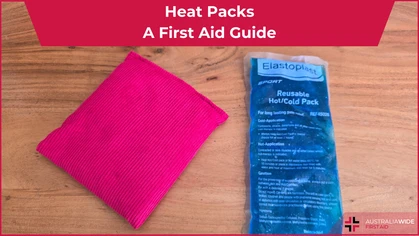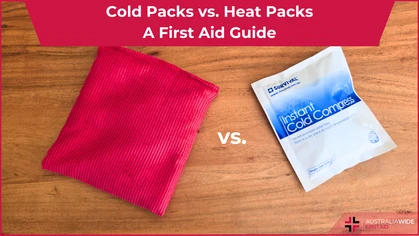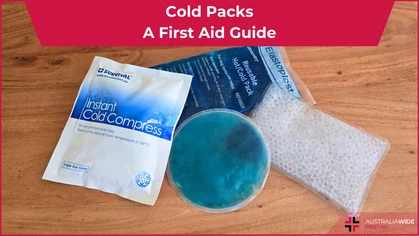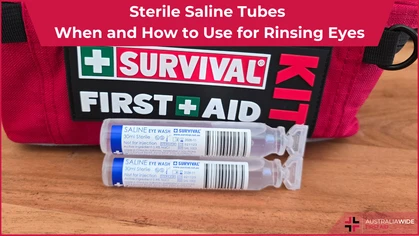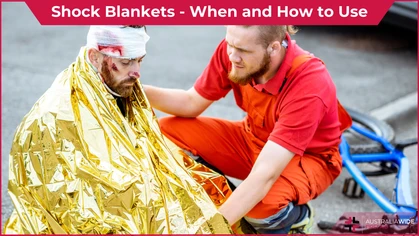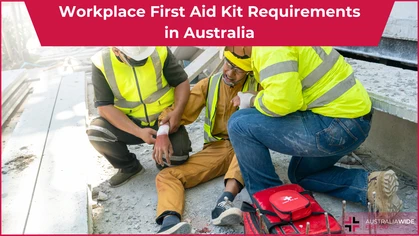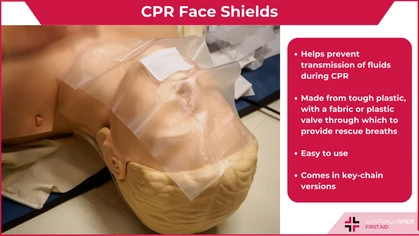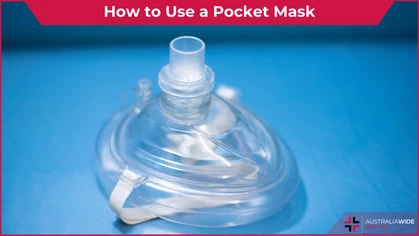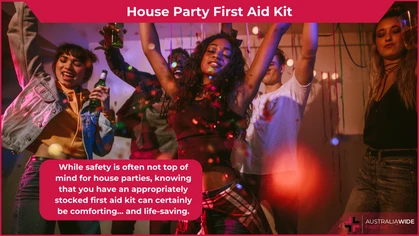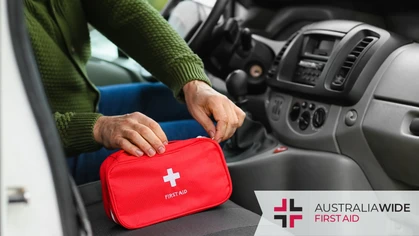Going Camping? Make Sure These Are in Your First Aid Kit

First Aid Equipment
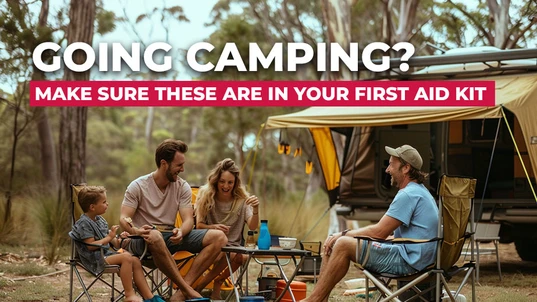 Camping in Australia offers the opportunity to explore our diverse landscapes, from pristine beaches to rugged mountains and dense forests.
While immersing yourself in the great outdoors, it's crucial to be prepared for unexpected disasters. From simple scratches and insect bites, all the way to life-threatening emergencies, it pays to be prepared.
A well-equipped first aid kit is a must-have for any camping trip. It’s worth checking your kit each time you head out, no matter how often, to make sure that all items are present and in-date.
In this article, we'll outline the essential items you should include in your first aid kit to ensure a safe and enjoyable camping experience in Australia.
Camping in Australia offers the opportunity to explore our diverse landscapes, from pristine beaches to rugged mountains and dense forests.
While immersing yourself in the great outdoors, it's crucial to be prepared for unexpected disasters. From simple scratches and insect bites, all the way to life-threatening emergencies, it pays to be prepared.
A well-equipped first aid kit is a must-have for any camping trip. It’s worth checking your kit each time you head out, no matter how often, to make sure that all items are present and in-date.
In this article, we'll outline the essential items you should include in your first aid kit to ensure a safe and enjoyable camping experience in Australia.
Antiseptic Wipes and Solution
Australia is home to various insects and wildlife, and your exposure to these while camping increases significantly. Add to that the flora and even camping equipment and your chances of sustaining small injuries are quite large. It's essential to keep wounds clean to prevent infections. Antiseptic wipes and solution will help disinfect cuts, scrapes, and insect bites. This is especially important in areas where surplus clean water may not be readily available.Adhesive Bandages
Pack a variety of adhesive bandages in different sizes to cover and protect minor wounds. These are essential for blister prevention and for treating small cuts and abrasions. Keep a variety of types available, such as plastic and fabric, in case of mild allergies or irritations caused by the material of the adhesive bandage.Sterile Gauze and Medical Tape
In the case of larger injuries, sterile gauze and medical tape are crucial for dressing wounds and providing a secure and clean covering.Tweezers and Scissors
Australia is home to a variety of flora and fauna, some of which can pose risks. Tweezers are handy for safely removing splinters, thorns, or bee stingers. Make sure they are cleaned well after each use. Disinfect them if they come in contact with bodily fluids, stinger venom, or potentially irritating flora. Medical scissors can be used to cut gauze and tape, as well as remove items of clothing in an emergency situation.Disposable Gloves, Safety Pins, and Cotton Swabs
These items come in handy for a variety of minor wounds, bites, and illnesses. Ensure you have an appropriate disposal mechanism for after their use.Insect Repellent
Protect yourself from Australia's notorious mosquitoes and other biting insects by including insect repellent in your first aid kit. Look for a DEET-based repellent for effective coverage. Preventing bites in the first instance is more effective than trying to deal with itches and stings afterwards.Pain Relievers
Over-the-counter pain relievers such as ibuprofen or paracetamol can provide relief from headaches, muscle aches, and other minor pains that may arise during your camping trip. Always follow medical advice for administration of these if you are taking other medications or have underlying health concerns. If you have children camping with you, ensure you have age-appropriate pain relievers available, and a way to track their dosage times.Sunscreen
Australia is known for its intense sun, and protecting your skin from harmful UV rays is crucial. Pack a high SPF sunscreen (50+ is recommended) and reapply it regularly, especially if you're spending a lot of time outdoors. There are a multitude of options available, including for sensitive faces, spending time in sandy areas or in the water, and even specifically for your scalp in times when you cannot wear a hat. It is worth spending some time before camping testing out a few different types to work out what you prefer.Hydrocortisone Cream and Antihistamines
Soothe insect bites, rashes, and minor skin irritations with hydrocortisone cream. It can provide relief from itching and inflammation. Antihistamines will help provide relief from mild allergic reactions, irritations, and insect bites.Emergency Blanket
Australia's weather can be unpredictable, and temperatures can drop significantly during the night. An emergency blanket is lightweight and compact, providing crucial warmth in case of unexpected cold conditions.CPR Face Shield or Resuscitation Mask
Include a CPR face shield and/or a resuscitation mask in your first aid kit for protection during cardiopulmonary resuscitation (CPR) procedures. There are keychain versions of the face shield that you can keep with you at all times. If you have young children camping with you, invest in an infant resuscitation mask. These are much smaller than their adult counterparts, and will form an effective seal on infants and young children during rescue breaths.First Aid Manual
A comprehensive first aid manual specific to the Australian context can guide you through basic first aid procedures. Ensure it covers local wildlife risks and plant-related hazards. You can add your own information to this manual as desired, especially if you are camping in an area known for particular environmental or wildlife hazards.Personal Medications
If you have prescribed medications, make sure to bring an adequate supply. Include any necessary allergy medications or other personal health items. Include in your first aid kit a document which outlines these medications, including reason for administration and dosage. This information can be vital in case of emergencies, especially if paramedics attend.Additions for Remote Camping
If you are planning a camping trip in a remote location, or one that may be difficult to get emergency help, there are some additions you should make to your first aid kit.- Splints – foam or aluminium splints in case of broken bones or snake bites
- Electrolyte tablets or oral rehydration salts
- Water purification tablets or filter
- Whistle
- Torch with batteries – in addition to your camping torch
- Multi-tool or knife
- Digital thermometer
- Anti-diarrheal medication
- Wound closure strips or butterfly closures
- Antibiotic ointment
- Burn gel
- Automated external defibrillator (AED)
First Aid Training
While having a fully stocked first aid kit is crucial, it is far less effective if you don’t know how to properly use it. Invest in a first aid course to learn the skills and knowledge needed to appropriately respond should an incident occur. It could mean the difference between life and death, full recovery and life-changing consequences. Keep your first aid training and CPR training up to date. Make sure more than one person in your group has this training, in case it is you who needs help.Conclusion
A well-prepared first aid kit is an indispensable companion for any camping trip in Australia. It ensures that you can handle minor injuries and be better prepared for unexpected emergencies, allowing you to fully enjoy the breath-taking beauty and unique experiences that camping in Australia has to offer. Stay safe, be prepared, and embrace the adventure!
Originally published at
https://www.australiawidefirstaid.com.au/resources/going-camping-make-sure-these-are-in-your-first-aid-kit
as part of the Australia Wide First Aid Articles Library
